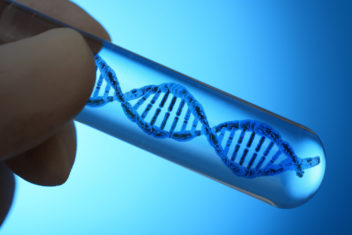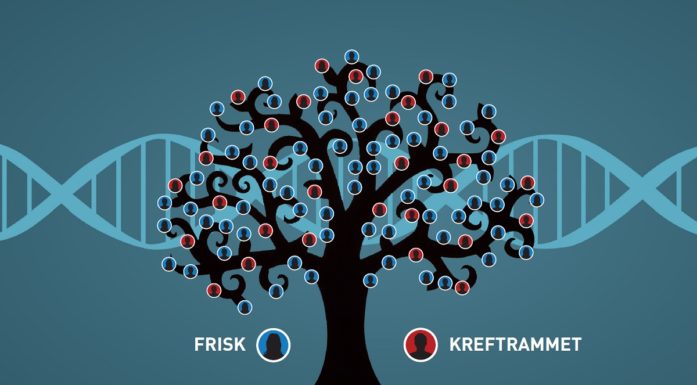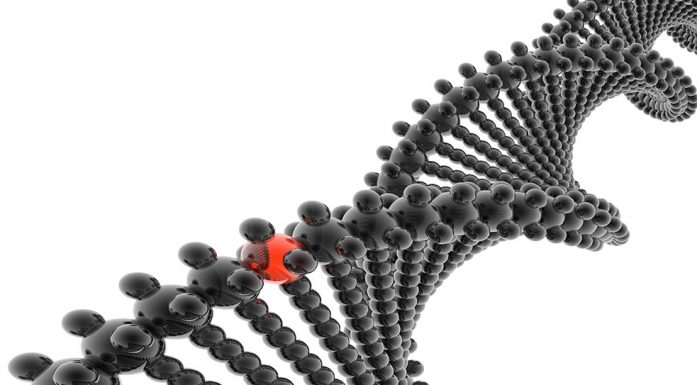Twenty years of sequencing genes… for better or for worse
It’s been 20 years since the first draft sequence of the human genome was published in the journals Nature and Science. The result led then-President Bill Clinton to state that we are now learning the language in which life was written, and that “doctors will increasingly be able to cure diseases like Alzheimer’s, Parkinson’s, diabetes, and cancer by attacking their genetic roots.”
Sequencing 30 000 genes has changed the world, but in a different way than expected.
The human genome project (HUGO) has had a lasting effect. To start with, the project was revolutionary in its data sharing. Research data were immediately made available to other researchers.
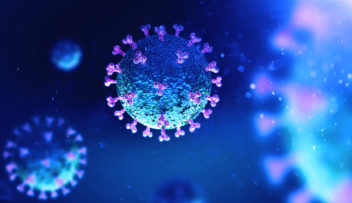
Without the rapid sequencing and sharing of the properties of the SARS-COV-2 virus, it wouldn’t have been possible to create the tests and vaccines we’re using today. Photo: NTB / Shutterstock
This tradition has been important in the fight against the coronavirus. Without the rapid sequencing and sharing of the properties of the SARS-COV-2 virus, we wouldn’t have been able to create the tests and vaccines we are using today.
Another important result of the project has been the chance to find the causes of rare diseases. People who previously were on an endless diagnostic odyssey to find out what ailed them can now take a genetic test that gives them an explanation and perhaps even a treatment for their disease.
Other people have received important health information that has made it possible to prevent serious conditions and plan for the future.
HUGO has also led to a radical improvement in testing technology. What used to take 13 years and cost US$5 billion can be done today in a few days for less than $120. This means that far more people can be tested, something we’re undoubtedly taking advantage of during the coronavirus pandemic.
The improvement in tests that followed from the HUGO project has also provided new insight into evolution. We have learned a lot about how species have evolved.
Unexpected uses
With the sharp drop in price, gene sequencing has revolutionized genealogy research. Many people have been able to learn about their origins and their relatives with the help of DNA tests. Others have found that the person they thought was their father isn’t after all – and that they have a bunch of half-siblings that they didn’t have the foggiest notion about.
Some people have found hundreds of genetic siblings and couples are wondering if they come from the same sperm donor.
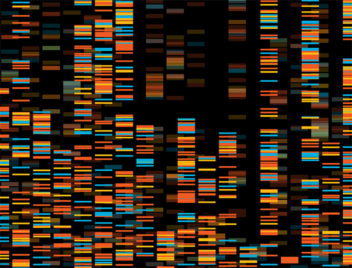
Gene sequencing can make it easier for the police to carry out their work. And genealogy has taken on a new dimension. Illustration photo: NTB / Shutterstock
Sequencing has also made it easier to convict perpetrators who have left behind bits of their DNA. These bits can be analysed and linked to DNA registers of previous convicts. But now genetic material is also being linked to genealogical databases.
One example is the “Golden State Killer,” former police officer and serial killer Joseph James DeAngelo, Jr., who was sentenced to life in prison for 13 murders and rapes in the 1970s and 1980s on the basis of DNA analyses. DNA from the perpetrator was found, but no hits came up in DNA registers of convicts. By searching genealogy databases, law enforcement was able to hone in on the perpetrator – without having any genetic information on him.
“We undeniably have a way to go here, as we sit isolated in our home offices in a partially shut down society due to a tiny RNA virus.”
DNA analysis offers unique opportunities for police investigating, but it also illustrates that a lot of people can find out a lot about you without you being aware of it. Remaining genetically anonymous has become difficult.
Another application of gene sequencing is “DNA dating” where you can look for a good genetic match in a partner. What do you do if you get 80 per cent compatibility on personality type, 75 percent on emotions and only 30 percent on genetics?
While many of the original expectations have not been met, DNA sequencing has been applied to applications that are completely different than initially envisaged – a lot for the better, but some also for the worse.
- You might also like: Scientists find smallest life forms on Earth
Big build-up
“Without a doubt, this is the most important, most wondrous map ever produced by humankind,” President Bill Clinton announced from the White House in 2000. He predicted that genomics would “revolutionize the diagnosis, prevention, and treatment of most, if not all, human diseases.”
We undeniably have a way to go here, as we sit isolated in our home offices in a partially shut down society due to a tiny RNA virus.
It’s not enough to know the alphabet for the “book of life” if we don’t know what the letters mean when they are put together into words. It’s like standing in front of a shelf full of books in a language you don’t understand.
It’s great that we’ve been able to put all the letters in books and the books on shelves, but if we don’t know what they mean, they’re not much help. To understand the letters and words of genetics, they need to be linked to something that has meaning for human beings – something that we experience.
The codes for hereditary traits have to be linked to events and experiences like diseases, behaviour, environmental factors, experiences and so on. In other words, we need to link individuals’ genetic codes to large amounts of information about individuals – and especially health data.
And this brings us to some of the many challenges facing genetics development in the years to come:
- How can we obtain enough data and good data to understand the information encoded in genes?
- How should self-determination and the right to privacy be safeguarded when finding out more about genes depends on access to all the information about each individual?
- How can we prevent insurance companies and unauthorized entities from obtaining and misusing the information?
We are already seeing that the companies that offer tests share the collected data with others. This raises ethical, legal and social issues about the right to privacy, informed consent and fair access to results.
Undesirable consequences
One type of negative consequence is that genetic information may be incorrect or outdated. This was the case for 21 women in Norway who had their breasts, ovaries or both removed between 2002 and 2014 as a result of a genetic test that was misinterpreted at Ullevål hospital.
Genetic testing for Huntington’s disease poses another challenge. The test can reveal with a high degree of certainty whether you will get this serious disease later in life.
Most people in the risk group still choose not to test themselves – they don’t want to find out. Genetic knowledge isn’t always good news. Good tests are already available that can predict dementia 10 years before it occurs – would you want to take a test like that?
“We have to be careful about building up genomics and exaggerating its consequences.”
As sequencing has become so affordable, the temptation to test broadly has grown, leading to the challenge of “genetic variants of uncertain significance.” Confusing test findings have become more common as discoveries crop up that scientists don’t yet know how to interpret or handle.
The story of one woman illustrates this scenario. She wanted to be tested for genes linked to breast cancer since both her mother and grandmother had had the disease. She agreed to test for a number of other conditions at the same time. The genetic test showed that she did not have “breast cancer genes” but that she had genes that could be linked to a type of stomach cancer. What this meant for her was not known. Instead of celebrating, she became deeply distressed.
Gene mapping’s white bias
The injustice of genetic testing is another challenge demanding to be dealt with. Since the the first human genome was sequenced 20 years ago, millions more have been sequenced, but mainly of people of European descent. This means that we lack important knowledge that could benefit other population groups.
What have we learned?
The young history of gene sequencing has shown that our exaggerated predictions have been put to shame. Nevertheless, sequencing has changed the world, but in completely different areas and ways than first thought. The unintended consequences have been both positive and negative.
Thus we need to be careful about building up genomics and exaggerating its consequences. This also applies to its new variants, such as personalized and precision medicine.
“The more that people know about you genetically, the more they can help you, but the more vulnerable you are as an individual as well.”
We have to beware of exaggerating the benefits, but also avoiding intimidation propaganda. History has taught us that we are exceptionally inept at predicting how technology will change our world and ourselves. We need to continuously reflect on both the possibilities of technology and its threats.
Literature and film, which can test the powerful technology of the future with less risk than in reality, can support us in that reflection. The films Gattaca and Blade Runner are good examples of future scenarios that explore what the world could be like with new genetic technology. The same goes for Margaret Atwood’s MaddAddam trilogy and Aldous Huxley’s Brave New World. They can help us develop technology in a positive way.
- You might also like: $180 million to go toward mapping world’s species
The future of sequencing
Three challenges in particular demand attention:
1) faster and cheaper testing,
2) interconnected data, and
3) genetic differentiation.
Faster and cheaper tests will allow us to do more testing and obtain a lot more data. But data is not information, information is not knowledge, and knowledge is not evidence. For data to make sense, it must be linked to information about us: whether we’re ill, have symptoms, our behaviour, our experiences, surroundings and our social profile.
Linking genetic and other data will provide more and personalized information. But it will also make it more difficult to remain anonymous in terms of our genetics.
The more that people know about us genetically, the more they can help us, but the more vulnerable we are as individuals. Many entities are likely to be interested in obtaining people’s genetic profiles in the same way as has been happening with people’s social profiles.
Then we move on to the third important topic: genetic profiling. In the same way that Facebook creates a good social profile of the individual on the basis of digital data, people who have access to genetic analyses will be able to create even better profiles of us. And since we are sharing more of the information with others and also share DNA with family members, an individual’s DNA won’t be needed. Maintaining genetic anonymity is getting harder. Of course, this information can be used in our best interests, but it can also be used for genetic monitoring and differentiation.
Using technology for good is important, and differentiating people based on their genetic characteristics must be avoided.
The human genome project is an important reminder that technology provides significant benefits, but it also exacts a price, in consequences that we are ill equipped to anticipate and challenges that we really need to be innovative to deal with, not only technically but also ethically.

